#Sisterhood of Karn
Text
Does anyone know, was Ohila originally supposed to be an older Ohica and they changed it for some reason? It seems awfully similar to be an accident...
#doctor who#sisterhood of karn#it hadn't occurred to me before but I just rewatched Brain of Morbius
8 notes
·
View notes
Photo

You know, I don’t actually remember what this conversation was about and what he said before this, but somehow I am absolutely certain that yes, that was you being cynical. Again.
(And you were probably right too)
#doctor who#ohila#sisterhood of karn#peter capaldi#twelfth doctor#being cynical#and sarcastic#also relatable#feel free to use as a reaction
35 notes
·
View notes
Text
The Cartmel Masterplan
The Actual Text, Posted Online for the First Time
A generous friend has shared with me the full text of “Gallifrey: Notes on the Planet's Background” – Andrew Cartmel, Ben Aaronovitch, and Marc Platt’s original outline of their masterplan for the Doctor’s origins – as printed in Virgin Books’ 1996 Doctor Who: A History of the Universe. Please see also Lance Parkin’s explanatory footnote and my commentary beneath!
The planet Gallifrey, world of the Time Lords in the constellation of Kasterborous, is one of the oldest and most powerful oligarchies in the universe. Its political and scientific influence is prevalent throughout the cosmos. But it is a world apart. Its power is substantially used for observation rather than involvement. Over the millennia, its self-imposed isolation has made it a staid and decaying society, obsessed with its own self-importance and tradition. It was not always so…
Ancient Gallifrey in The Old Time or The Dark Time, the Time of Chaos, was a world of both questing endeavour and dark superstition. It was the heart of a space-faring Empire, the hub of trade and commerce between other worlds. But the Gallifreyans were a race cursed with communal telepathy. The majority of the populous shared each others’ minds and thoughts. No mind was alone. The superstitious people worshipped the Menti Celesti – literally, heavenly minds – who were the free-thinking Gods.
By training or natural ability, some Gallifreyans could achieve private thoughts: an individuality above the mass mind of the general populous. They became revered Heroes: great philosophers, scientists and explorers, much in the style of the Greek Heroes, renowned for their deeds and derring-do.
Ancient Gallifrey was governed by the line of Pythias, wise seer women, who saw the future. The Empire prospered under their rule, but for all its enlightened education and scientific advancement, their reign also encompassed barbarism.
Amongst the ideas and goods traded through the Empire, there were also slaves. A primitive Time Scoop was employed to import alien servants and gladiators for the Games enacted in the Death Zone. Such popular “entertainment” provided an outlet for the extremes of emotion that telepathic crowd behaviour could engender. Thus through a skilful mix of manipulation and superstition, the ruling Pythia was able to control Gallifrey and its Empire.
Rassilon, a high ranking Hero, saw that the stifling authority of the Pythias threatened Gallifrey’s true destiny as a supreme galactic power. He stood for the influence of Reason against the Pythian reign of superstition. His skills as a tactician had defeated an invasion of Vampires that threatened the whole galaxy. He knew that Gallifrey could not progress until the aimless telepathic abilities of the people were given purpose. With a group of supporters, he deposed the Pythia and set about the restructuring of all Gallifreyan society. This period of cultural renaissance became known as the Intuitive Revelation.
The followers of the Pythia fled to Karn and set up a quasi-religious cult as guardians of a flame fountain that distilled an Elixir of eternal life.
Rassilon undertook to reform Gallifreyan society and thus consolidate the planet’s supremacy. Aware of the corrupting influence of absolute power, he repeatedly rejected the offers of a coronation, announcing that he could not rule the planet alone.
The suicidal end of the line of the Pythias had one immediate and deadly effect on Gallifrey. The Pythia embodied the fertility of the planet, she was Gallifrey itself. As she took her own life, the last of the line cursed the planet in revenge for her overthrow. Gallifrey became a sterile world. There were no more children. Unborn babies died in their mothers’ wombs. Rassilon was forced to find an immediate answer, before the Gallifreyans became extinct.
Eager to hold Gallifrey to ransom, the Sisterhood of Kam offered the salvation of their elixir. But in the face of disaster, Rassilon was able to forge a fresh solution.
From the existing hierarchy of Gallifrey, a new social design was evolved. Power was shared through a High Council whose members represented the Chapterhouses of Gallifrey. Each Chapter comprised groups of the ancient Families of Gallifrey, of whom Rassilon saw the need for legislative control to stabilise dwindling population numbers.
It was decreed that each Family would have a genetic bank known as a Loom, from which a set quota of Family members would be generated. Bio-genetic engineering would allow the Gallifreyans to regenerate their bodies at the moment of death through a sequence of thirteen lives. At the end of the final life, when a Family member died, a new replacement member was generated on the Family Loom. Parents have not existed on Gallifrey since this time; all family members are Cousins to one another. (This makes the business of Susan being the Doctor’s granddaughter all the more intriguing…)
The Looms were installed in all Family Houses across Gallifrey. Each House was adapted as bio-architecture, programmed to serve and look after its incumbent family. These were living buildings invested with a low degree of sentient awareness, even encompassed in their furniture and fittings.
Families were headed by the most senior Cousin. One other was selected as a Housekeeper, an interactive medium between the Cousins and the living House itself. The House would become as much a part of a Family as its Loom or its Cousins; occasionally with frighteningly possessive results!
The Chapters had their own Academies whose leaders were appointed as Cardinals to serve on the High Council in the newly constructed Vatican-like Capitol. The “Civil Service” members supporting the Council were known as Ordinals. Below them came the plebeian classes, trained as skilled technicians and artisans.
As a symbol of power, Rassilon had the Matrix developed: a vast extra-dimensional panotropic computer net containing all the information amassed by Gallifreyan culture. It stored all research and postulation, and the mind of every dying Gallifreyan passed into its capacity. Thus it could predict the future and give judgement on the past. As such, the Matrix is Gallifrey, the essence of that planet and its culture. In many ways, the Matrix replaced the Pythia, if not in wilful delegation, at least as a living repository of all knowledge.
To achieve his reforms, Rassilon needed vast resources of energy. He found an ally in Omega, the chief of the scientific fraternity and also a Cousin of Rassilon. But while Rassilon was the practical strategist laying foundations for a new society, and Omega was the provider, there was a third, darker figure; an “Eminence Grise”, with whom power was shared in an inner sanctum before plans were laid for the judgement of the High Council.
His origins, birthplace, even appearance are an unrecorded mystery. He never served on the High Council. Some legends hint that he may not have been born on Gallifrey, others that he was endowed with powers far greater than either Rassilon or Omega, but he kept these veiled beneath the Gallifreyan shape he wore. How influential his role really was is uncertain. His presence as part of the Triumvirate has always been overshadowed by the myriad achievements of Rassilon and the martyrdom of Omega; he was known simply as “the Other”. Nevertheless, a minor festival known as Otherstide is annually celebrated in his honour.
Under the rule of the Pythia, experiments had started into time travel. Rassilon deemed their use of telepathy as a travel source to be dangerous, but still rationalised their basic concepts for his own experiments.
To develop time travel as a completely viable facility, Omega estimated that a preliminary energy source equal to a supernova was required. He developed a remote stellar manipulator device which would induce the controlled detonation of a star and channel the energy released back to Gallifrey. This device was known as the “Hand of Omega”.
The device succeeded in its task and Gallifrey acquired the energy source it needed, but Omega, who had gone to oversee the project himself, was lost in the supernova explosion. His sacrifice offered unlimited power to the Gallifreyans. They truly became Time Lords.
In their early days as Time Lords, the catastrophic destruction of the planet Minyos, whose inhabitants sought to emulate their “gods” the Gallifreyans, emphasised the need for radical change in Gallifrey’s role in galactic politics.
After Omega’s death, the remaining two-thirds of the Triumvirate set about consolidating Gallifrey’s position. Two courses were open to the Time Lords: to control the universe as supreme rulers; or to act as guardians, overseeing the natural development of time and space. Either way their own position had to be unassailable. Gallifrey itself had to be protected.
In an astonishing feat of engineering, Rassilon entered the black hole left by Omega’s supernova and sealed its vast singularity energy in an icon of power known as the “Eye of Harmony”. He brought the Eye back to Gallifrey and so balanced the existence of the planet against the colossal energy source of the black star. Gallifrey was now unassailable.
Ironically, the stabilising influence of the Eye of Harmony has surely affected Time Lord society as well. Over millennia, development has steadily ground slower and slower; Gallifreyan culture has become less adventurous, and more complacently staid. The people’s telepathic abilities have also dwindled. Rassilon’s legacy and laws still guide the Time Lords, but the meanings of many of his icons of power are now lost. (The line of Pythias also survives, not only on Karn, but in other offshoot manifestations – witness Lady Peinforte.)
Another product of the Intuitive Revelation was validium, a living metal, created as an ultimate defence for Gallifrey. The metal could think for itself, but in the wrong hands might act as a generator of destruction. It eventually proved itself too dangerous to be employed. Too many enemy forces were gaining access to the element and so the largest section was secreted away from Gallifrey in an asteroid where, it was hoped, it would be safe from interference.
While both Rassilon and Omega were virtually canonised, if not deified, there were no further records of the Other in any of the histories. Speculation says that he left Gallifrey altogether; legend says that he grew weary of being an all-powerful player at the chess game of the universe. Instead he longed to be a pawn on the board in the thick of the action. Common sense says that he retired quietly.
Footnote
This is virtually the whole of the text of a document ‘Gallifrey – Notes on the Planet’s Background (from ideas prepared for the Doctor Who TV series)’ by Andrew Cartmel, Ben Aaronovitch and Marc Platt. The document was written for Virgin, is dated 9.11.90, and comes to six and a half sides of A4 paper, including the coversheet. It outlines what fans have called ‘The Cartmel Master Plan’ – an attempt during the twenty-fifth and twenty-sixth series on television to redefine the origins of the Doctor and that of the planet Gallifrey, to reintroduce mystery to the series’ basic set-up, and to suggest that much of what we had been told about the Time Lords and the Doctor had been deliberately fabricated (as such, it doesn’t answer all the questions it raises). On-screen the ‘Master Plan’ was mainly confined to a handful of obscure references (and a handful more that were cut before broadcast).
The document embraces concepts from The Deadly Assassin, Silver Nemesis, The Five Doctors, State of Decay, The Brain of Morbius, The Invasion of Time, Arc to Infinity, Trial of a Time Lord, Remembrance of the Daleks (and Ben Aaronovitch’s novelisation of his story), The Three Doctors, Underworld, The Time Monster and Planet of the Spiders, as well as two unmade Marc Platt stories, Cat’s Cradle and Lungbarrow. A number of the New Adventures have adopted ideas from the document, including the first two novels by Platt and Aaronovitch, Cat’s Cradle: Time’s Crucible and Transit.
The last half-page of the document outlines the Doctor’s link to his planet’s ancient history and explains the origins of his granddaughter, Susan. It must remain a secret – for the moment at least. Anyone speculating about the contents of this last page ought to bear in mind that the Virgin Writers’ Guide categorically states that ‘The Other is not the Doctor’.
Commentary
With the exception of my italicized note at the top, everything above came from Doctor Who: A History of the Universe, and everything below is written by me, the blogger. Thank you again to my brilliant and talented friend – the Other to my Rassilon – who shared with me the pictures of the above!
A few thoughts based on the above:
As Parkin’s footnote points out, A History omits the last half-page of the original text, which explained Susan’s origin and the Other’s reincarnation into the Doctor. Since A History was released in May 1996, almost a full year before Lungbarrow gave these answers, it makes sense that this part was redacted. But if the details of the First Doctor’s rescue of Susan were written as early as 1990 and known to Virgin’s authors from the start of the New Adventures, how did we end up with the conflicting description of her rescue in Cold Fusion?
Much of this content clearly ended up in Cat’s Cradle: Time’s Crucible, as Parkin’s footnote mentions: the Gallifreyan Heroes, the Pythia, her suicide and curse, etc. (Presumably Lungbarrow just as faithfully adapts the material from the omitted half-page.) But I’m not particularly clear what Transit has to do with it! Was this just Virgin Books plugging their own content, or did I miss something major?
Just as in Time’s Crucible, the authors follow the explanation of Looms by explicitly pointing out the apparent contradiction with Susan calling the Doctor “Grandfather”. Hopefully this will finally kill the longstanding rumor that Looms are bad because they contradict An Unearthly Child: the creators knew exactly what they were doing.
I was clearly incorrect the other day to assert that “no source has actually linked Omega’s star with the Eye of Harmony”! Not only is this explicit in the Masterplan, it’s also mentioned in The Infinity Doctors. Mea culpa!
The Eye of Harmony’s “stabilising influence” being the cause of Gallifreyan societal stagnation was never explicitly explored or stated anywhere in the Doctor Who stories that followed, but it did manifest through the concept of the Anchoring of the Thread in the Faction Paradox series. The Book of the War didn’t merely copy Platt’s “Great Houses” language, it fulfilled parts of the Masterplan that other authors had neglected.
I knew that Quences identified his title as “Ordinal-General” in Lungbarrow, but I’d never caught the Cardinal / Ordinal pun. Too good!
Similarly: I am increasingly uncomfortable with the fact that “Celestis” is clearly a plural noun for “Celesti”, which means I’ll have to rethink all of my grammar 😟
Please let me know your thoughts!
#doctor who#cartmel masterplan#seventh doctor#the other#rassilon#gallifrey#virgin new adventures#lungbarrow#cat's cradle#time's crucible#menti celesti#eye of harmony#pythia#sisterhood of karn#the matrix#great houses#remembrance of the daleks#silver nemesis#effortpost#archival
216 notes
·
View notes
Text
Fond Memories, a Doctor Who fanfiction
The Doctor strolled through the Panopticon. A slight breeze ruffled his long brown hair. Smiling, he took out his pocket watch. It was always exactly the same time. A time where he was happy. A time where he was safe. A time where he was loved. The Time Lord heard running footsteps behind him. Grace. She bounded up to him and gave him a peck on the lips.
“What do you think of my home?” said the Doctor, still smiling.
“It’s…”
Grace laughed.
“It’s beautiful.”
“Isn’t it just. The Daleks have seemingly vanished from the face of the cosmos, and the universe has never been more peaceful.”
“Oi, Professor!”
The Doctor turned. Ace was there. She was wearing Time Lord robes and had in her hands a shimmering silver scroll.
“I passed Professor. I’m a Time Lord now.”
“That’s wonderful!” cried the Doctor.
“Old Doc. Chronotis says I can visit Perivale whenever I want. But I’ve got a lot of stuff still here to do.”
“That man never changes.” laughed the Doctor.
“I say, Doctor, is that you?”
The Doctor looked around. Brigadier Alistair Gordon Lethbridge-Stewart stood before him, smiling.
“Planet Earth is safer than it has ever been thanks to you, Doctor. Just last week we declared world peace.”
“That’s wonderful.” said the Doctor.
A gigantic fanfare of trumpets startled the Doctor and his friends. Rassilon strode through the Panopticon accompanied by a guard of honour. Upon seeing the Doctor his face erupted into a dazzling grin.
“Theta Sigma, you have distinguished yourself as Gallifrey’s greatest and most worthy offspring.” he said.
“For this reason I am pleased to confer upon you the Freedom of All Space and Time!”
The Doctor grinned.
“That’s excellent news!”
Rassilon inclined his head slightly.
“I believe that there are others among us who wish to speak with you.”
Before the Doctor’s eyes were Leela and Narvin. They embraced the Doctor in a group hug.
“Doctor I – we – would be most honoured if you were to attend our upcoming wedding.” said Leela.
“Leela, Leela, of course, I’d be only too happy to.” said the Doctor.
“Doctor.”
He would have known that voice anywhere. No matter if he had lived to outlast reality itself, the voice of his best friend would always bring him home.
“Hello Sarah Jane.” said the Doctor.
“I’m back.” said Sarah Jane.
“And I’m never going to leave you again.”
“Grandfather!”
Susan ran across the Panopticon’s beautiful floors. The Doctor swept her up in a hug.
“Susan! Not a day older than when I last saw you!”
The Doctor’s friends and family surrounded him in a semicircle. Everyone was smiling. Everyone was happy. Everything was perfect.
“This never happened.”
The woman was dressed in Karn Sisterhood robes. She moved inexorably towards the Doctor like approaching nightfall.
“I’m sorry. What never happened?” said the Doctor.
The woman gestured to the Doctor’s loved ones.
“This. All of this. It was just a comforting fantasy that I created in your mind.”
“I don’t know who you are, but I’d like you to leave now please.” said the Doctor.
“You have my most sincere apologies.” said the woman.
“For what?” said the Doctor.
As the Doctor watched the people around him faded away like ghosts. He was alone on a battlefield littered with burnt out Dalek casings. In the distance Gallifrey’s citadel burned.
The Doctor sank to his knees. Tears leaked from his eyelids.
“Why?” he whispered.
“Why?!” he exclaimed.
“WHY?!” he yelled to the red sky.
“Because you deserve some measure of happiness.” said the woman.
“Because over the coming centuries you will remember many, many times. And you will think to yourself; if I just remember hard enough I might be able to change what has happened.”
“Leave me!” snarled the Doctor.
The woman bowed her head and vanished.
***
Deep inside the Sisterhood’s cave, Ohila regarded the Time Lord lying seated before her. The Dream Crab had successfully induced a healing trance, as Ohila hoped it would. All that remained now was to bring her patient back to the real world. Gently, with infinite care, Ohila removed the Dream Crab from the Doctor’s head. He stayed slumped in front of her for what seemed like eternity. Then he stirred and sat up.
“Cass!”
#doctor who#doctor who fanfiction#doctor who fanfic#doctor who fic#8th doctor#eighth doctor#gallifrey#leela#narvin#ace#rassilon#grace holloway#susan foreman#brigadier alistair gordon lethbridge stewart#dream crab#sisterhood of karn#ohila#angst#the time war#8th doctor fanfiction#eighth doctor fanfiction#panopticon
4 notes
·
View notes
Text
Michelle Gomez, Clare Higgins, Raquel Cassidy, Kate Duchêne 🤝 Being on Doctor Who at some point in some way/also playing witch teachers in charge of chaotic witch children.
#im screaming#this is so funny to me#michelle gomez#clare higgins#raquel cassidy#kate duchêne#big finish audios#doctor who#tww98#tww17#caos#caos lilith#ada cackle#constance hardbroom#hecate hardbroom#miranda cleaves#regina & seraphim(the high price of parking)#ohila doctor who#sisterhood of karn
94 notes
·
View notes
Text
Sisterhoods with red hoods
#Star Wars#nightsisters#nightsisters of dathomir#doctor who#sisterhood of karn#spongebob#patrick star#squidward#gary the snail#jason todd#red hood#dc comics#sisterhood of the traveling pants
4 notes
·
View notes
Text
You’d think they’d use the lesbian cult of witches that are on an equal power level to the time lords more often
15 notes
·
View notes
Text
Doctor Who: Night of the Doctor
I rewatched this wee episode on 29 May 2023 because it’s on the blu-ray for the television movie and it seemed a good idea to bookend Paul McGann. (Note: there are loads, and loads of top notch 8th Doctor material out there... just not a lot on TV.)
We meet Cass, a crew member on a gun ship who’s abandoned on her ship before it crashes. The Doctor arrives to save her, but she flips out when she realises he’s a Time Lord. The ship crashes on Karn and the sisterhood is there to trigger a regeneration to end a war…
At only six minutes and a bit, there’s a fair amount that happens in this teeny episode. And it’s great to see Paul McGann get a proper farewell, and an introduction to John Hurt! Though it'll be a little while before I get to his appearance again...
5 notes
·
View notes
Text

A Sisterhood of Karn Moodboard
12 notes
·
View notes
Text
Galactic Gazetteer: Karn
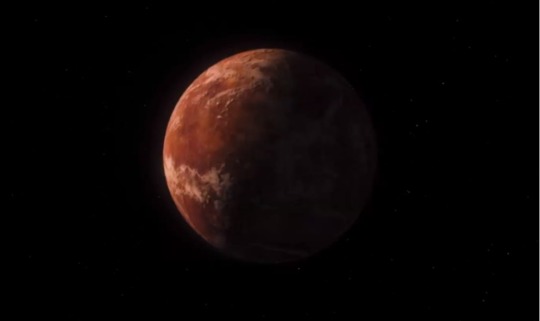
Location: Gallifreyan system, Constellation of Kasterborous
Ruling power: Masters of Karn, Time Lords, Sisterhood of Karn (depending on era)
Appearances: "Doctor Who and the Daleks in Seven Keys to Doomsday" (1974)
"The Brain of Morbius" (1976)
"The Night of the Doctor" (2013)
"The Magician's Apprentice" (2015)
Visited by: the Fourth Doctor, the Eighth Doctor, the Twelfth Doctor, Sarah Jane, Iris Wildthyme
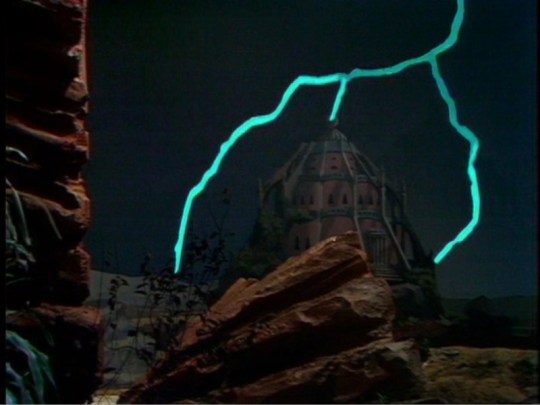
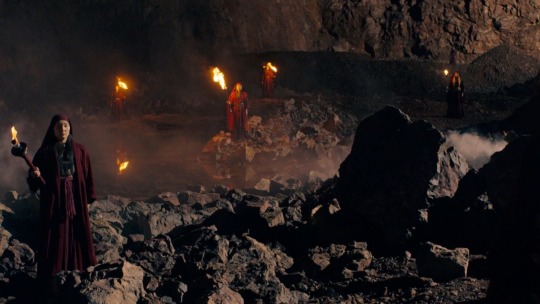
Fun fact: first created for the stage play "Seven Keys to Doomsday," Terrance Dicks reused the name for TV
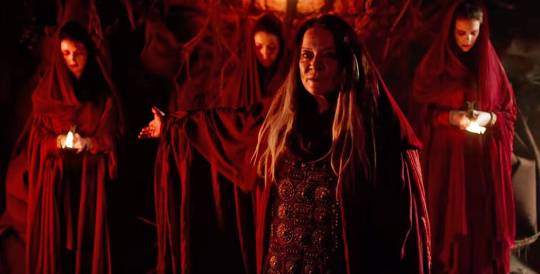
5 notes
·
View notes
Text
The Night of the Doctor
To mark the 10th Anniversary of its release, and Paul McGann's 64th birthday, here's a review of the mini-episode 'Night of the Doctor'!

View On WordPress
#50th Anniversary#Eighth Doctor#Minisode#Paul McGann#Regeneration#Review#Sisterhood of Karn#The Night of the Doctor#The War Doctor#Time War
1 note
·
View note
Text
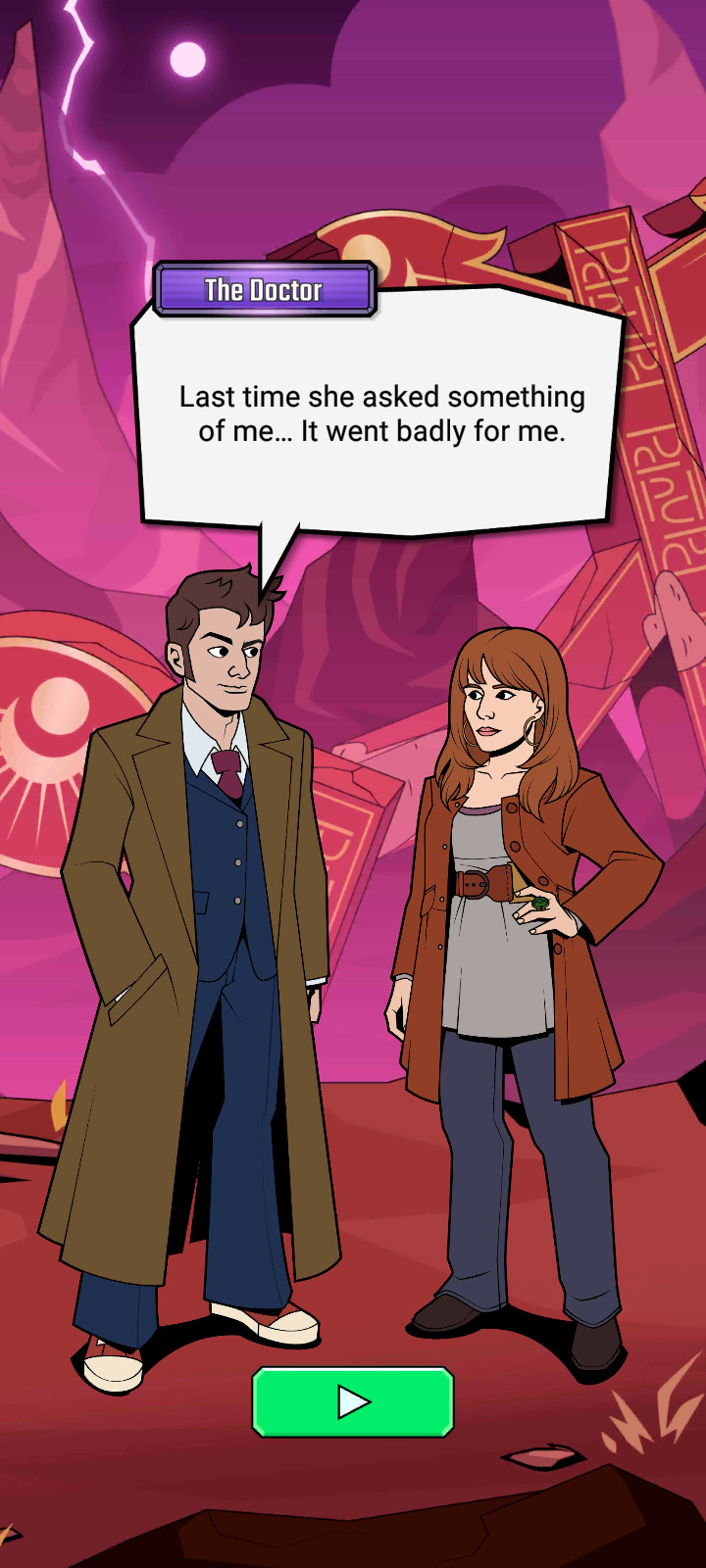

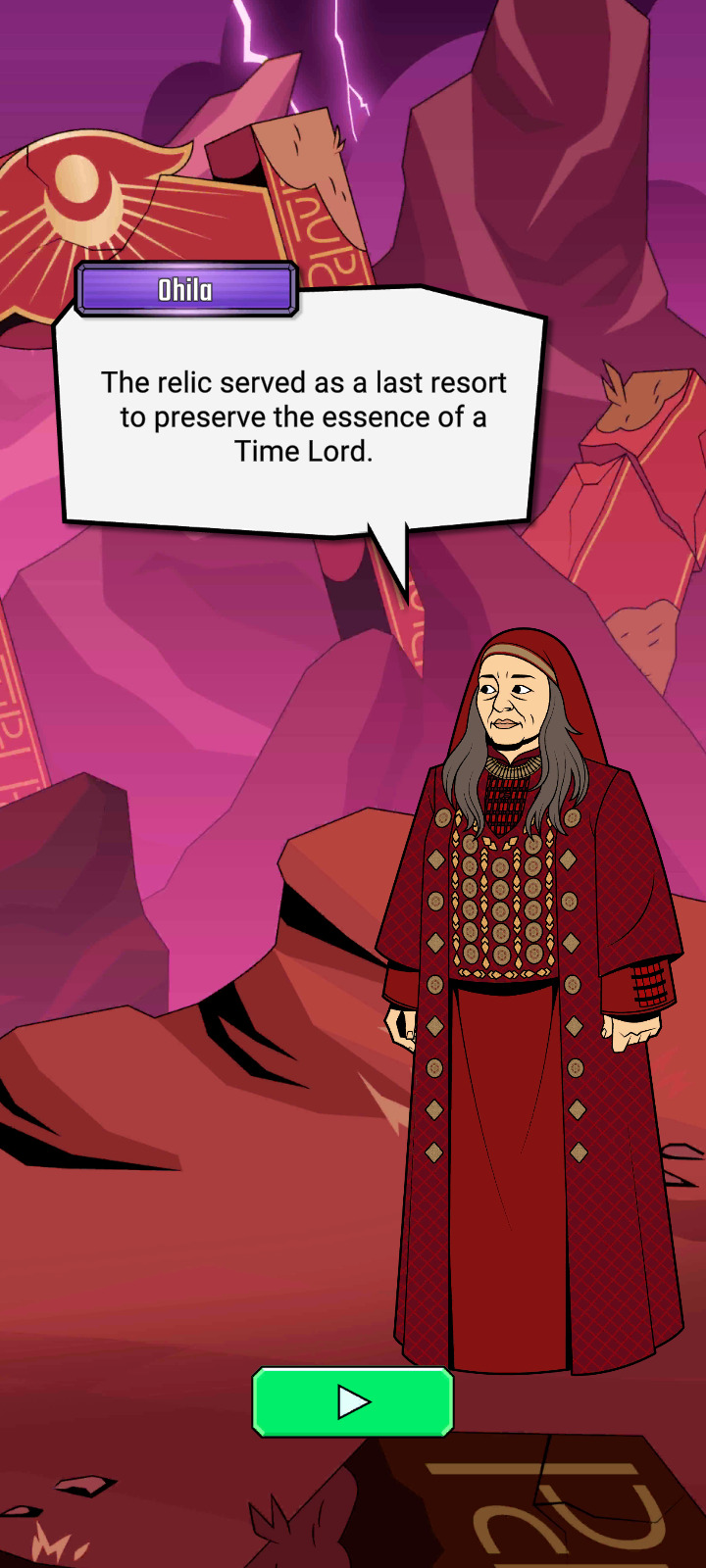

Donna sdfghjkl
#the sisterhood of karn#the brain of morbius#ten#tenth doctor#donna noble#ohila#doctor who#lost in time#doctor who lost in time#morbius#time lords
21 notes
·
View notes
Text
I have thoughts abt the doctor participating in practices that were previously exclusive to members of a sisterhood more than once.
#like yes the whole thing with the sibylline sisterhood in the pompeii episode of nuwho was a joke and he was plenty disrespectful towards#the practices of the sisterhood of karn but like#looking past the weird stuff that comes from sci-fi writers looking down on mysticism and being generally misogynistic (bc I would like to#take it differently for my own interpretation of canon) while also keeping in mind that . yes the doctor is non-binary. no the writers did#not actually think of the doctor as non-binary in the modern sense for the majority of the shows lifespan. I still enjoy the fact that they#couldn’t help but touch on the nature of his genderqueerness/gender-nonconformity. like they couldn’t help it!! it’s always there!! even#when they’d vehemently deny it if asked directly. it’s still there in practice!#idk if I’m getting my feelings across but. idk. even when the sisterhood as a whole rejects him there is usually a member or two that do#extend their welcome to him in a way that feels veryyy.. I see you#and he himself ridicules the idea that their exclusion of him is reasonable. like yes the writers probably mostly intended that to be bc he#thinks their rules are stupid but I’m trans and I say it’s bc he’s gnc !!!!! ‘just us girls’ !!!!!#the brain of morbius#classic who rewatch#doctor who#classic who#fourth doctor#mios
92 notes
·
View notes
Text
Doctor Who OC Masterlist
inspired by @children--of--time
Jane Smith/James Smith
Species: Time Lord/Human hybrid (clone)
Place of Origin: Unknown, presumably Gallifrey
Story: Life on Mars?
Pairing: Ryan Sinclair (5th only), Rose Temple-Noble (5th & 6th? only)
Face Claim: Multiple
A half human, half Time Lord clone of the Doctor created by Tecteun. They were brought to Earth and dropped on the doorstep of Sarah Jane Smith, one of the Doctor's companions, and raised by her for 14 years. Their first incarnation met their father while their mother was investigating Deffry Vale High School
Kata/The Librarian
Species: Time Lord
Place of Origin: Gallifrey
Story: The Gallifreyan Archives
Pairing: The Doctor
Face Claim: Multiple
Kata was chosen to be an Archivist, meant to analyse and teach Gallifreyan History, as well as to be in charge of ancient technologies - such as the Moment. She and the Doctor became friends during their time at the Academy, but their relationship soured during the Time War. During the Time War, she was sent down to Earth alongside a Dalek and taken to Van Stattens museum, where she reunited with her childhood friend
Luna Archibald
Species: Human - Time Skipper
Place of Origin: New York
Story: Fate, Coincidence & Luck
Pairing: None
Face Claim: Chloe Rose Robinson
An American teenager who was supposed to die in an accident, but was rescued by the Eleventh Doctor. This means that she exists in a sort of Schrödinger's cat like situation - on the one hand, Luna is dead, but on the other hand, she's alive, and linked to the Doctor's timeline. However, she never meets him in order, always meeting him in different incarnations and on different adventures - and to make things interesting, the Doctor recognised her, which was the reason he saved her life
Taglist
@darth-caillic @sterling-writes @wonderguards @reirvival @arrthurpendragon @foxesandmagic @eddysocs @superspookyjanelle (want to be added or removed? send an ask or a dm!)
#ocapp#ocappreciation#ochub#queerocs#doctor who oc#OC: Jane#OC: James#story: life on mars#OC: Kata#OC: The Librarian#story: the gallifreyan archives#OC: Luna#story: fate coincidence and luck#luna & kata are both plot bunnies right now#i came up with luna while i was at the shops and thinking of#having an oc who jumps through the doctor's timeline#similarly to celery long scarfs fezzes and other questionable fashion choices#i also have a concept for a sisterhood of karn based oc who is paired with the master/missy#buuuut i dont really have any ideas for her outside of that lol#kata is very much a bunch of lizzexx's ocs stapled together -- she has a similar 'inspired' back ground to proffy#is linked to the time war and the moment like mac#and is met in the same episode as angel#tbh im not sure if she's going to be paired with the doctor#or if theyre gonna be close friends lol idk just yet
5 notes
·
View notes
Text

iykyk
#the sisterhood of karn#the sisterhood of korn#he missed the memo#doctor who#dr who fandom#dr who meme#doctor who memes#beetle's homemade memes
8 notes
·
View notes
Text
finally won a game of mtg with 12/13's deck and i didn't just win, i overkilled bc once that deck actually gets rolling it is insane
we're convinced that deck is the most difficult out of the three we have. the villain/master's deck is straight forward aggro and dick moves, the time wimey deck is also relatively straightforward and can gain one hell of an army, where as my deck is just playing on chance and basically "let's see what happens!".
#the sisterhood of karn is an insane card??#but i am also gonna throw 10 and 4 into my deck#i wanna make a 12/clara deck too tho
0 notes